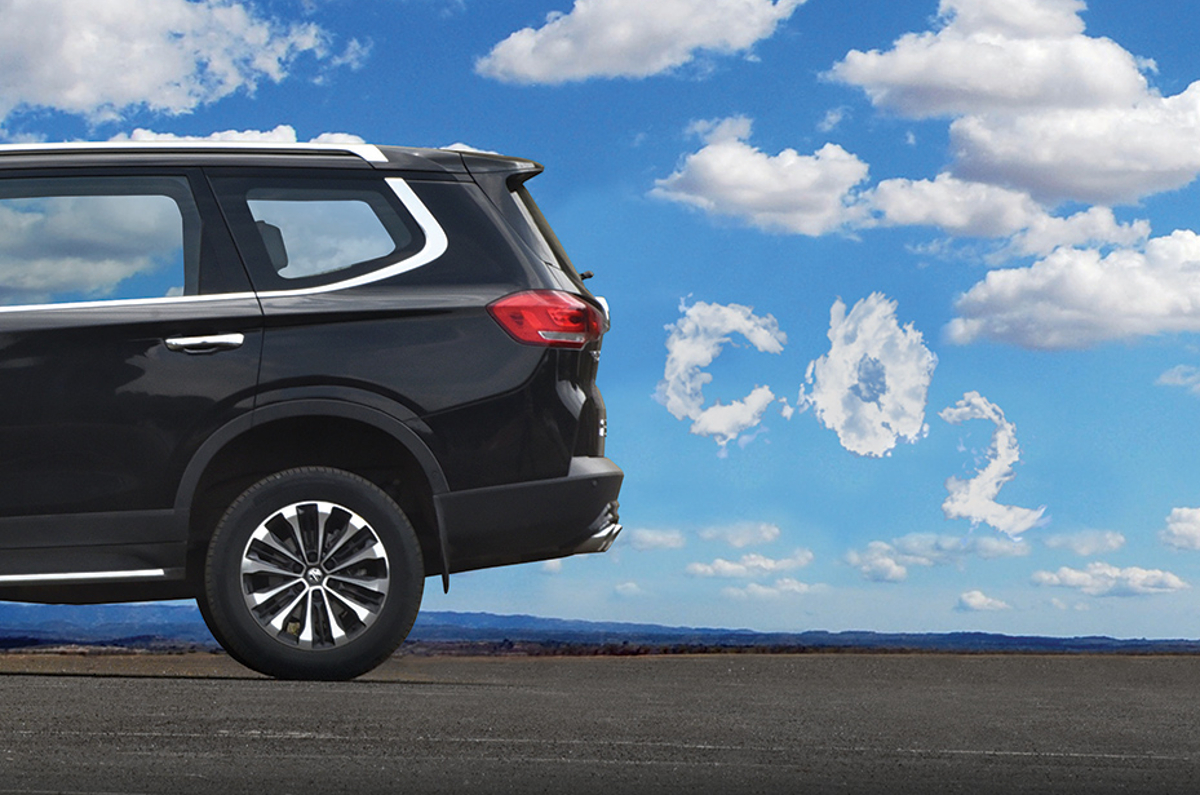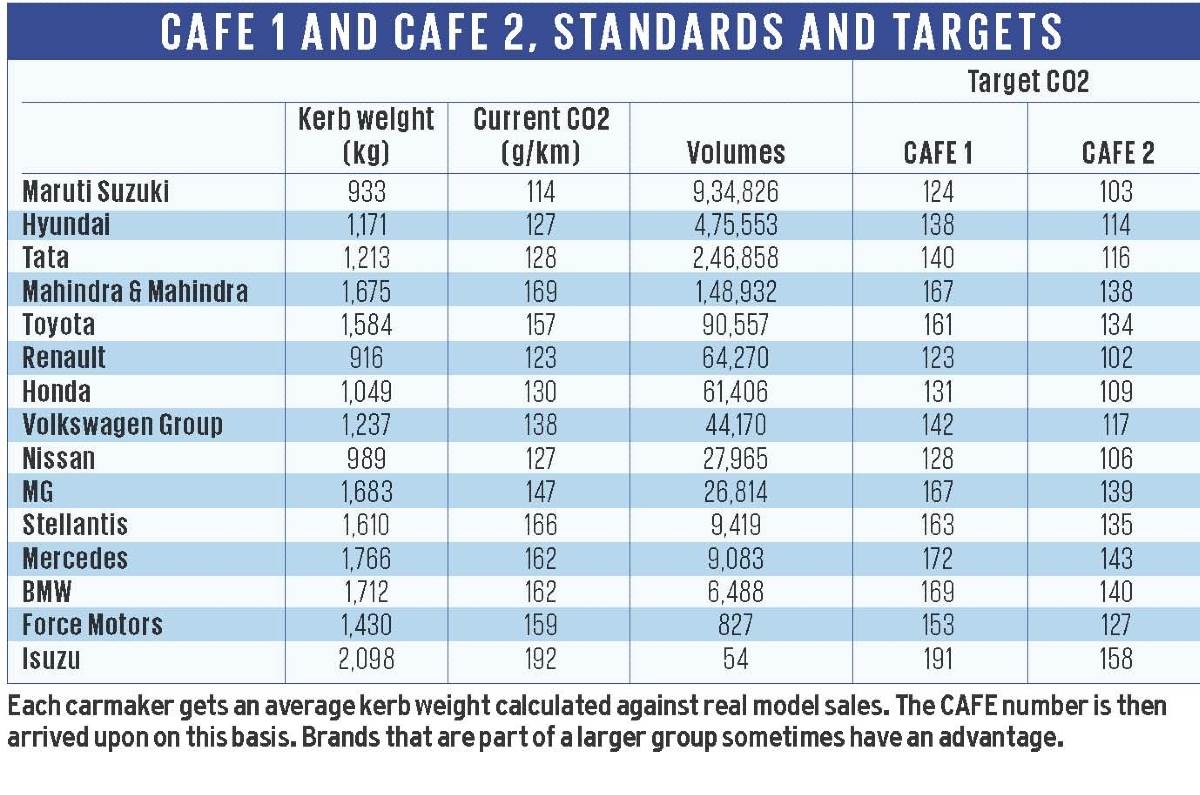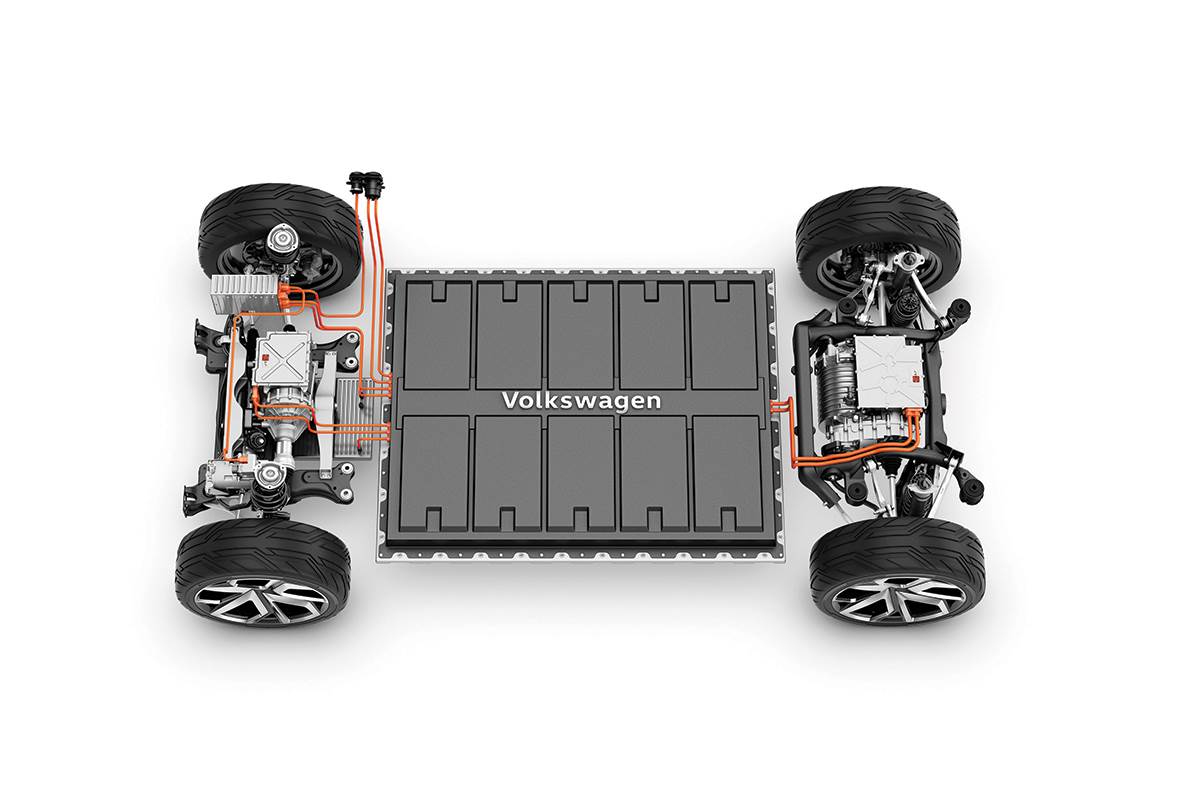
What does CAFE mean? Why is it necessary?
CAFE stands for Corporate Average Fuel Economy or Efficiency. Imposed on a carmaker’s entire fleet, and not on an individual model, it is a limit set on the total emission of carbon dioxide produced. These norms force manufacturers to make more efficient cars, which impacts many other things.
Why a limit on CO2, when CAFE’s about fuel efficiency?
Measuring fuel efficiency and the CO2 output of a car are one and the same thing. The amount of CO2 a car emits is, in fact, directly proportionate to the amount of fuel it consumes.
How are CAFE norms and BS6 norms different?
While BS6 norms limit the emissions of pollutants like hydrocarbons, sulphur and oxides of nitrogen, CAFE norms deal with overall fuel consumption, specifically the quantity of fuel consumed.
How is a company’s CAFE target or CO2 ‘number’ calculated?
The number is arrived at in two stages. First, the corporate average kerb weight of a manufacturer is calculated. This is computed not only by taking into account the weight of individual models but also by factoring in the number sold.

This is done for every individual model currently on sale. Each model then gets an individual CO2 ‘number’... based on a sloping line on a graph that makes allowances for increases in kerb weight (see graph). The final CAFE group target is then calculated when all the models and their individual CO2 numbers are put together. Each manufacturer is then provided a fleet average CO2 in grams per kilometre that it has to meet.
What are the individual targets for each company?
In 2014, two sets of average fuel consumption standards were announced. The first would come into effect from 2017-2018 and would be relatively easy to meet. The second set, what we have now, has come into play from 2022-2023.
CAFE 1 and CAFE 2, STANDARDS AND TARGETS

Car manufacturers in the first phase until 2022 were obliged to meet a base target of 130gm of CO2/km, based on an average industry kerb weight of 1,037kg. (Individual company targets are different.) In the second phase, from 2022-2023 onwards, manufacturers have to comply with a base industry figure of 113gm of CO2/km, based on an average industry kerb weight of 1,145kg – a reduction in CO2 output of about 13 percent over the earlier period, despite the increase in weight.
Where does each manufacturer stand today?
Alongside are figures that provide the current positions of carmakers in India and their individual CO2 emission situation. Plus, the table provides sales-weighted kerb weights and their corresponding CO2 targets.
Can manufacturers use clean tech to get a more easily achievable target?
CAFE norms allow for super credits. Carmakers can get credits by selling relatively cleaner vehicles. This is done by adopting battery electric vehicles (BEV), plug-in hybrids (PHEV) and hybrid electric vehicles (HEV). The credits are awarded as follows: 3 for BEV, 2.5 for PHEV, and 2 for HEV. This means that one BEV sale will be counted as three, making your target easier to reach; a PHEV sale will be counted as two and a half; and an HEV sale counted as two in the overall fleet average sales-weighted CO2 emissions calculations.
 CAFE norms allow for super credits that carmakers can get from cleaner vehicles like EVs.
CAFE norms allow for super credits that carmakers can get from cleaner vehicles like EVs.
Between March 2021 and December 2021, the data shows OEMs such as Hyundai, Tata Motors, Mahindra, Toyota, VW, MG, Daimler, and BMW making use of the super credits the most. Additionally, manufacturers can also use individual bits of fuel saving technology to gain an advantage.
| SUPER CREDITS - Electrified vehicles qualify for super credits as below | |
|---|---|
| Battery Electric Vehicle | (Counted as 3 sold) |
| Plug-In Hybrid Electric Vehicle | (Counted as 2.5 sold) |
| Hybrid Electric Vehicle | (Counted as 2 sold) |
Regenerative braking, for example, has a reduction factor of 0.98, so does idle start-stop, tyre pressure monitoring, or a six or more speed transmission. What this means is that if any of the vehicles sold has these features, then the CO2 for that vehicle is recalculated after multiplying it by 0.98 to give them an advantage.
| CREDITS FOR CO2 REDUCING TECH - Target for vehicles sold is recalculated to give a reduced CO2 figure | |
|---|---|
| Regenerative braking | 0.98 |
| Start-Stop System | 0.98 |
| Tyre Pressure Monitoring System | 0.98 |
| 6 or more speed Transmission | 0.98 |
Do diesel cars have an advantage when it comes to CO2?
Diesel-powered cars are inherently more efficient than petrol-powered ones. So yes, there is a benefit here, and there’s also the slightly increased kerb weight that has to be factored in.
What if a car manufacturer doesn’t meet the prescribed norms?
While no fine has been imposed in India as yet, it is only a matter of time when financial implications will cause OEMs to bring more weight saving and greener technology here.
In addition, we will see more and more OEMs taking advantage of super credits, like Tata Motors has with its EVs. The deadline to meet the CAFE 2 targets, however, could still be extended, in light of delays due to the COVID-19 situation.
https://ift.tt/egZL8Wn



